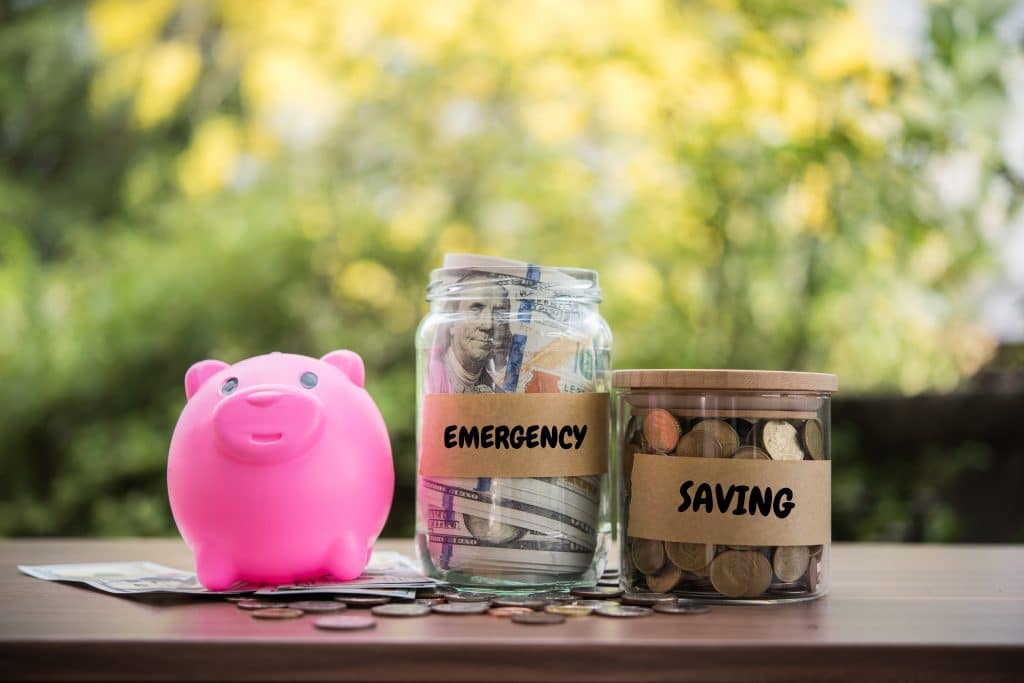Mastering Financial Education in Daily Life
Por: katia alves em julho 7, 2025

Why Financial Education Matters Now More Than Ever

In today’s fast-paced and consumer-driven world, many people feel overwhelmed by their finances. The truth is, money affects nearly every area of our lives — from the food we eat to the dreams we pursue. Yet, most of us never learned how to manage it.
That’s where financial education in daily life becomes a game-changer. It’s not just about learning how to save money or avoid debt — it’s about developing confidence, freedom, and long-term stability.
This guide will show you how to build a solid financial foundation by applying smart money principles in your everyday routine — no fancy degree required.
Step 1: Know Where Your Money Goes
The first and most important rule of financial literacy is awareness. You can’t change what you don’t see — and you certainly can’t improve what you don’t measure. That’s why the foundation of practical financial education begins with one simple habit: tracking your money.
Knowing exactly how much you earn, spend, and where your money flows every month is the key to making intentional choices instead of impulsive ones. It’s like turning on the lights in a dark room — suddenly everything becomes clear.
🧾 How to Start Tracking Your Finances
This process might seem intimidating at first, but it becomes second nature over time. Here’s how to start:
1. List All Sources of Income
Begin by calculating your total net income — that’s your take-home pay after taxes and deductions. Include:
-
Salary or wages from your main job
-
Freelance or gig work (Uber, Fiverr, etc.)
-
Government benefits (e.g., unemployment, child support)
-
Passive income (dividends, rental income, interest)
This is your starting point — your monthly income baseline.
2. Track Every Expense for 30 Days
Write down every expense, no matter how small. That includes:
-
Fixed bills: rent, insurance, car payments
-
Daily purchases: coffee, snacks, groceries
-
Online subscriptions: Netflix, Spotify, cloud storage
-
One-time or unexpected expenses: gifts, repairs, medical costs
📌 Tip: Don’t rely on memory — you’ll miss things. Use your bank statements, receipts, or a money-tracking app to be accurate.
3. Separate Fixed vs. Variable Expenses
Understanding your spending habits means categorizing them clearly:
| Type of Expense | Examples | Description |
|---|---|---|
| Fixed | Rent, car loan, health insurance | Same amount each month |
| Variable | Dining out, groceries, entertainment | Changes month to month |
| Discretionary | Subscriptions, shopping, hobbies | Optional, lifestyle-based |
When you distinguish between needs and wants, it becomes easier to spot patterns and make better decisions.
📱 Use Technology to Help You Track

Tracking can be manual, but most people find it easier with digital tools. Here are some highly recommended apps:
-
Mobills – User-friendly for beginners, great visuals
-
YNAB (You Need A Budget) – Based on zero-based budgeting, ideal for detailed control
-
Mint – Connects to your bank, categorizes expenses automatically
-
Spendee or PocketGuard – Good alternatives with strong mobile interfaces
Choose the one that best matches your lifestyle and tech comfort level.
🔍 What You’ll Discover When You Track
Most people are surprised by how much they spend on small things — coffee runs, delivery apps, impulse buys. These small leaks can drain hundreds per month without you noticing.
By tracking your spending for even one month, you’ll gain:
-
A clear snapshot of your financial reality
-
Insights into where money is being wasted
-
Opportunities to reallocate money to what really matters (savings, debt reduction, or goals)
-
A sense of control and empowerment over your finances
🎯 Awareness Is Power
This step isn’t about judging yourself — it’s about getting the facts. Without judgment or guilt, your only goal here is to observe. You’re building a financial mirror that reflects your true habits. From there, you can build a budget that works, reduce financial stress, and set smarter goals.
Once you know where your money goes, you’re no longer in the dark — you’re in control.
Step 2: A Realistic Budget That Works for You

Many people hear the word “budget” and immediately think of restriction, sacrifice, or financial struggle. But in reality, a budget is not a punishment — it’s a freedom plan. It’s a way to give your money purpose, reduce financial anxiety, and align your spending with what truly matters to you.
Budgeting allows you to take control rather than letting your money disappear without direction. It helps you spend intentionally instead of emotionally, and gives you the clarity to say “yes” to what you love — and “no” to what doesn’t add value to your life.
🔢 Try the 50/30/20 Rule (Flexible and Beginner-Friendly)
One of the most popular and simple frameworks to get started is the 50/30/20 rule, which divides your income into three broad categories:
💡 Tailor the Rule to Fit Your Life
The 50/30/20 rule is just a starting point — not a one-size-fits-all solution. You may need to adjust it based on your circumstances:
-
If you live in a high-cost city, your “needs” may take up more than 50%.
-
If you’re aggressively paying down debt, your “savings/debt” category may rise to 30–40%.
-
If you’re currently earning less, your focus may be more on essentials and less on discretionary spending.
What matters most is not perfection, but progress. A working budget should reflect your lifestyle, priorities, and financial goals.
🛠️ How to Create and Stick to a Budget
-
Calculate your monthly net income (after taxes).
-
Categorize all your expenses into Needs, Wants, and Savings/Debt.
-
Use a budgeting app (like Mobills, Mint, or YNAB) or a spreadsheet to track your spending.
-
Set realistic limits for each category based on your recent habits — then improve slowly.
-
Review your budget weekly or monthly to make adjustments and celebrate wins.
🚦 Budgeting = Awareness + Choice
Budgeting isn’t about saying “no” to everything — it’s about saying “yes” to the right things. It empowers you to:
-
Avoid lifestyle inflation
-
Break the cycle of living paycheck to paycheck
-
Plan for short- and long-term goals
-
Spend guilt-free on what you truly enjoy
Step 3: Create an Emergency Fund

An emergency fund is your financial safety net. It prevents you from relying on credit cards or loans when unexpected events occur — job loss, medical bills, car repair, etc.
How to Build It:
-
Start with a goal of $500 to $1,000.
-
Then aim for 3–6 months of essential expenses.
-
Store it in a high-yield savings account or liquid government bond (e.g., TreasuryDirect in the U.S., Tesouro Selic in Brazil).
Set up automatic transfers each payday — even $20 per week makes a difference.
Step 4: Spend Smarter, Not Harder
Financial education helps you break free from impulsive consumerism. Every purchase is a choice between instant gratification or future peace of mind.
Smart Spending Tips:
-
Wait 24 hours before buying non-essentials.
-
Always compare prices — use price tracking tools like Honey or Google Shopping.
-
Cancel unused subscriptions and memberships.
-
Cook more at home and meal prep to reduce food costs.
-
Buy quality, not quantity — long-lasting items save more over time.
Step 5: Get Out (and Stay Out) of Debt
Debt is one of the biggest barriers to financial growth. While not all debt is bad (e.g., a student loan or mortgage), high-interest debt like credit cards can quickly spiral out of control.
Debt Elimination Strategies:
-
Avalanche Method – Pay off debts with the highest interest first.
-
Snowball Method – Pay off the smallest debts first for motivational wins.
-
Debt Consolidation – Combine debts into one with lower interest.
-
Negotiate with creditors — you may qualify for lower rates or settlements.
Pro tip: Always make more than the minimum payment on credit cards when possible.
Step 6: Start Investing (Even If You’re a Beginner)

Investing isn’t just for the rich. Thanks to technology, anyone can start small — and time is your greatest ally due to compound interest.
Safe First Steps:
-
Emergency fund first, then invest.
-
Try robo-advisors like Acorns, Wealthfront, or Betterment.
-
Consider index funds or ETFs that track the market (e.g., S&P 500).
-
Contribute to a retirement account (IRA, Roth IRA, 401(k), or local equivalent).
💡 Learn before you invest. Platforms like Morningstar, NerdWallet, or your local stock exchange site offer free educational tools.
Step 7: Use Financial Tools and Apps
Technology can make managing money much easier and even enjoyable. Use tools that automate your finances and track your progress.
Recommended Apps:
| App | Function |
|---|---|
| Mobills | Budgeting, expense tracking |
| Mint | All-in-one financial dashboard |
| Revolut/Nubank | Smart banking |
| Real Valor | Portfolio tracking (Brazil) |
| Trademap | Investment analytics |
Set reminders for bill payments, track goals visually, and stay in control with notifications.
Step 8: Make Financial Learning a Habit

Just like fitness, financial education is a lifestyle. Continue learning and improving every month.
Learn From:
-
Books:
-
“The Psychology of Money” by Morgan Housel
-
“Your Money or Your Life” by Vicki Robin
-
“The Millionaire Next Door” by Thomas J. Stanley
-
-
Podcasts:
-
“The Dave Ramsey Show”
-
“Afford Anything”
-
“So Money with Farnoosh Torabi”
-
-
YouTube Channels:
-
Graham Stephan, The Financial Diet, Two Cents
-
Bonus Tip: Talk About Money Openly
One of the most underrated skills in financial education is being able to talk about money — with your partner, family, or friends.
Benefits:
-
Align financial goals in relationships
-
Teach children early about money
-
Break taboos and learn from others’ experiences
Financial literacy shouldn’t be a secret — it should be shared.
Final Thoughts: Take Control, One Step at a Time
Applying financial education in daily life is not about being perfect. It’s about being intentional. Every smart choice you make — whether it’s skipping a purchase, tracking your expenses, or saving $10 — builds toward your long-term security and peace of mind.






